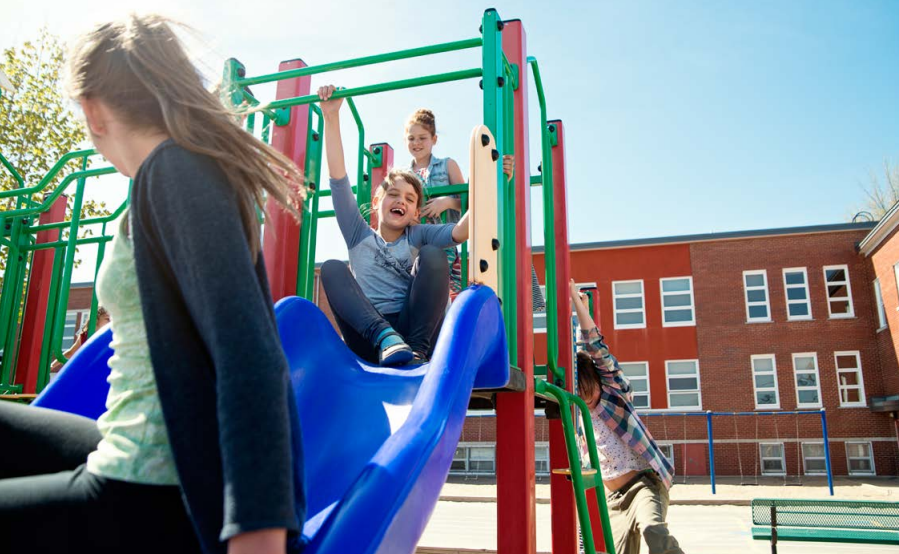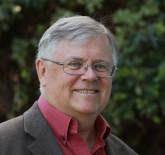HPS Progress in New Brunswick

Previously published in Volume 81, Issue 2
Abstract
Based on research in many settings demonstrating that the Health Promoting Schools (HPS) approach contributed to students’ adoption of healthy behaviours, PHE Canada sought to work with others to disseminate this approach widely in Canada and support its uptake by local schools.
To do so, PHE Canada wanted to test a particular approach that involved identifying and supporting geographic clusters of schools through training, provision of resources and providing access to expertise. This case study tells the story of the New Brunswick HPS pilot, which included schools from the Anglophone West School District.
PHE Canada and HPS pilot in New Brunswick
After examining the experiences of successful HPS initiatives across Canada and conducting extensive conversations with HPS leaders and innovators, PHE Canada developed a theoretical model of a network approach that they believed could build on existing initiatives, as well as provide a strong potential for sustainability by utilizing local assets and resources.
PHE Canada’s HPS model was based on the provision of HPS training to schools in a geographic cluster, and then supporting them virtually through the implementation process. The clustering approach was developed so that schools would have a better chance of learning together, sharing experiences and supporting each other through implementation. There was also a better chance to develop a critical mass of HPS schools in particular areas of the country.
School selection
To be eligible to participate, schools had to meet certain criteria: there had to be support from the school board; there needed to be at least tacit support from the school principal; and there needed to be someone who could act as the HPS champion in each school, whose role included forming a leadership team in the school and acting as the school’s liaison to the New Brunswick cluster of HPS schools. In terms of support, the school champion initially participated in a one-day training session on the HPS approach, led by PHE Canada. The participating schools then agreed to follow the HPS process, including completing the Healthy School Planner exercise developed by Joint Consortium for School Health (JCSH), as well as submitting regular progress reports. In exchange, each school was eligible to receive a $1,000 grant for HPS activities, support to attend the workshops and on-going support from PHE Canada through their planning and implementation process.
Participating schools in the New Brunswick HPS pilot
- Lincoln Elementary School, Oromocto
- Montgomery St. School, Fredericton (K-5 school serving middle-class neighbourhood, approx. 200 students)
- Nackawic Elementary School, east of Fredericton, near Southampton
- St. Mary’s Academy, Edmundston (K-12 school serving anglophone community in francophone city, approx. 190 students)
- Stanley Highschool9, Stanley
- Assinaboine Elementary9, Oromocto
PHE Canada training and support
Representatives from each participating school in New Brunswick attended two one-day training sessions, one in April of 2014 and the next in April of 2015. The purpose of the initial training was to introduce the HPS concept and to help the schools get started on their initial planning. At the subsequent training session, the schools were able to share their implementation experiences, learn from each other and reflect on their progress.
Each school was invited to send as many members of their HPS School Leadership Team as possible to the trainings (teams generally included a school administrator, teachers, school staff, and a public health nurse or dietitian, and sometimes parents, students and community members),
The topics covered in the training were:
- Getting participants and their school communities engaged in the Health Promoting Schools project and framework, using the Comprehensive School Health model;
- Informing participants about PHE Canada and its resources for helping them achieve their in-school goals of creating a healthy school community;
- Helping the participants build the capacity of their school staff and faculty to create health promoting schools;
- Building strong leadership teams at each school and throughout the region with a vision and set of actions for building health promoting schools;
- Laying the foundation for a strong regional network that could add further capacity to each school’s goal of creating a health promoting school; and
- Evaluating the workshop training content, format and methodology to determine its suitability for further deployment nationally in support of future Health Promoting School initiatives.
Leadership team's role
The role of the team was to share the responsibility for leading the school’s HPS initiative. The interviewees noted that each leadership team was successful in creating a sense of shared ownership throughout that extended beyond the physical education group, and that helped to make HPS an initiative that encompassed the whole school community. This broader sense of ownership was helpful in creating a sense of longer-term commitment to the initiative. The teams also helped to bring additional expertise and resources from other parts of the school and the community to support HPS activities.
This approach of developing a leadership team to support HPS was considered to be quite important by several teachers and administrators. Comments included:
“One of the reasons why HPS had not become more generally established in schools is that there is a lot of staff turnover. In the past, things like HPS were dependent on the motivation of individual teachers or admin staff. If they left, the whole thing disappeared. What was needed was more professional development for teachers to help spread responsibility for HPS more broadly. Right from the start PHE Canada’s attitude has been to emphasize this team-based approach.”
“In our first workshop meeting with the six New Brunswick schools, we started working on developing mission statements, gaining recognition in the school and exchanging program ideas with the other schools. But what the PHE Canada workshop really helped us with was the process of forming a leadership team in the school. We were completely missing that until then.”
When the teams discovered there wasn’t much more new work for them (they were already doing many of the activities), they became much more comfortable. They realized the main difference with HPS was in how all the different health pieces fit together. In particular, the exercise of mapping it all out through the Healthy School Planner and seeing how all the pieces fit together, allowed them to conceive of a more holistic school approach.
Biggest challenges
The interviewees universally indicated that their biggest challenge was — and remains — having enough time in the day to get teachers and staff to participate. Participating teachers and staff did not receive any time reduction in their school responsibilities to plan HPS activities, and the Board for their activities provided no release time. In some instances, schools were able to insert HPS discussions into PD days or into weekly staff meetings as a way of educating teachers and staff. It was therefore, in this context, that the small contribution that was initially provided by PHE Canada towards release time to attend the first workshop was considered very important. Many teachers and administrators noted that they might have been able to move more quickly with HPS, or accomplish more, if they had been able to access additional release time.
Engaging stakeholders
The New Brunswick HPS initiatives were quite successful in engaging a variety of stakeholders. The most consistent external partner in all of the initiatives was the health authority, whose participation aligned well with the Healthy Learners In School Program wherein public health staff were co-located within the school board to provide support to schools. HPS provided the opportunity for renewed energy and committment, which helped to strengthenrelationships with schools.
HPS allowed staff in the Healthy Learners in School Program to work directly to support the school leadership teams. They took the HPS training with the teams, developed partnerships with the teams and were able to contribute to the development of school strategies, especially on issues of nutrition and mental health. Said one public health nurse, “We now do a lot more connecting, educating and awareness creating.” The nurses expressed strong support for HPS as a strategy because of its potential to help achieve the priorities for school health that had been established by the New Brunswick Department of Health under the Healthy Learners in School Program.
The AWSD Board was another important partner in the HPS communities. Initiative leaders kept the Board informed about HPS activities in each school and ensured that those HPS activities continued to align well with Board priorities, such as the Board’s District Improvement Plan. This helped to lend added legitimacy to the HPS initiative and to position it, not as an “add-on” for the schools, but as an integral part of the strategy to help the schools achieve the Board’s goals.
In addition, many leadership teams were able to develop relationships with community partners (some of whom were parents), leading to collaborations with places such as universities, gyms and suppliers of athletic equipment.
Planning and priority setting
Each school undertook a planning process to identify priorities for their school’s HPS work. The planning processes made use of the data-driven JCSH Healthy School Planner tool (which each school was required to complete). They also used school-based data from provincial health surveys as well as the Tell Them From Me Survey (a province-wide survey of Grade 4-5 students, and Grades 7+) to identify student issues and priorities. Each school then brainstormed to develop an action plan to address the priorities.
There was a conscious effort to make sure the HPS action plans were integrated well with the school’s contribution to the AWSD District Improvement Plans; this was important so that HPS would not be seen as a separate initiative, but one that contributed to the school’s broader improvement goals.
The main issues identified by the HPS schools in their priority-setting processes were:
- Improving mental fitness
- Improving healthy nutrition
- Student connectedness and belonging
- Physical fitness and levels of student physical activity
- Student engagement
Many observed that while physical activity is still a concern, it didn’t seem to be as great a priority as some of the others. Observed one teacher, “What we see is that the kids are active at school. The gym is being used all the time by classes or extracurricular activities and therefore physical activity is not as high a priority as say mental fitness or healthy eating.”
HPS initial impacts
The HPS initiative in New Brunswick is still at a very early stage among the participating schools, so at this time it is challenging to fully assess the HPS impact on students, families and their communities. However, some results will be collected via subsequent annual iterations of the Healthy School Planner and more results will come from tools such as New Brunswick’s Student Wellness Survey (although it is only administered every third year). Despite this, teachers and administrators at the four HPS schools have already identified anecdotal signs of success in terms of an evolving healthy school culture, healthy learning, and PHE Canada’s role.
Building a healthy school culture
One of the foundational ideas of HPS is that it is more than just a series of activities, but rather an approach that gets embedded into the culture of the school. Even at this early stage the participating schools are already showing signs of how this is happening. Through the process of developing leadership teams at the schools in combination with a structured planning process, HPS is being seen as more of a long-term strategy with sustained support than just a “flavour of the month” exercise. All of the schools had organized health and nutrition activities in previous years, but these had usually been one-off events. With HPS there is a greater prospect of sustainability due to the integration of activities across the school, in addition to a stable group within the school who can focus on implementing the strategy.
A public health nurse commented, “HPS has been important in helping schools to move from thinking about health promotion as a specific activity or program, to thinking about it as a framework. The difference is that a framework is a way of thinking, and the impact can be much greater and longer lasting than with programs that come and go. HPS has really helped to ‘put health on the agenda’ at these schools. They have worked through the process and have developed their plans, so they now take a much more intentional and integrated approach to health promotion, rather than organizing a bunch of disconnected activities. Schools are asked to do so many things; HPS helps to give them a focus and make their approach much more consistent.”
One administrator reported, “We have a happier school since we started HPS. More teachers and students are participating in activities, and there is better morale among students and teachers. As well, parents have been better informed about school activities and are now participating more.”
PHE Canada's role
First and foremost, interviewees felt there was a great deal of value in being invited to participate in a national HPS pilot (by PHE Canada) and in being provided with a small incentive to do so. However, the monetary value of the incentive was not its most important part. Rather it was seen as an affirmation of a direction the schools wanted to move in and as an indicator of the recognition and support needed for them to become community innovators.
But PHE Canada provided more than inspiration. They provided a systematic, practical approach for each school to achieve its own health goals -- whether they were around physical activity, nutrition, mental health or connectedness.
PHE Canada also created opportunities to share experiences and develop innovative ideas. This proved to be no small thing in the minds of the participants. Having access to a group of peers in a ‘community of practice’ nurtured a sense of confidence in the participants’ ability to achieve what initially seemed to be very big goals. But it also fostered a sense of community and shared commitment. In doing so, PHE Canada laid the foundation for a regional network for the creation of healthy school communities — a resource that can be tapped for ideas and support both now and in the future.
Scaling up HPS: Looking forward
The New Brunswick experience provides a number of helpful lessons for further expansion of the HPS approach in New Brunswick, as well as for introducing HPS to other parts of the country.
The idea is to foster the pilot schools as “exemplars” that could support new schools by providing concrete local examples of how the HPS concept can work, in addition to providing aspiring schools with local experience and expertise. Each of the current HPS schools has agreed to mentor another nearby school in the HPS approach. In this way, the expansion of HPS in New Brunswick can be largely self-sustaining over the long-term, as experienced schools “pay it forward” and are able to support new schools as they aspire to become healthy school communities.
Several interviewees pointed out the importance of aligning the HPS approach with provincial and School Board strategies and showing how it may be used as a tool to help schools realize their student health goals. Schools considering implementing their own HPS initiatives need to see how HPS helps them to better fulfill the health priorities of the district and the province, in addition to contributing to overall student academic achievement. This will lend a greater sense of legitimacy to HPS, as well as minimizing the chance that it will be marginalized outside of school priorities.
Support for schools
One of the significant challenges faced by schools participating in HPS is the funding of relief time so teachers could attend HPS training. The relief support received from PHE during the initial training was greatly appreciated, but PHE changed its funding model so this support was not available for the second training session. It is possible that school boards might be able to budget for this if they begin to value and prioritize it and plan for it in advance.
Conclusion
In the context of modern Canadian schools, the experience of poor student nutrition2, high rates of childhood obesit[1], declining levels of mental health among students[2] and a growing sense of disconnection[3] anti-social behaviour among young people is rather commonplace. In that context, the notion of creating a healthy school community may therefore seem to some as a bit utopian or altruistic – obviously too big for any single school to tackle. In fact, this misperception may be the biggest impediment to a healthy school.
New Brunswick schools, like those in the rest of the country, have been similarly challenged. Like their counterparts in other provincial and territorial jurisdictions, the New Brunswick ministries of education and health already had policies in place that support school health, and the basic tools and resources had already been created by bodies like JCSH, and yet the approach at the school level had remained largely unchanged.
The HPS experience, on the other hand, has demonstrated that a relatively simple, low-cost intervention has the potential to produce some substantial changes in the way schools approach the promotion of student health and improved academic performance. HPS helps to provide a strong foundation that schools can use to support a wide variety of health promotion work, including:
- a focus on developing a leadership team as a core element of the HPS process (as opposed to delivering curriculum items);
- sharing ownership and responsibility for leading the initiative across a diversity of passionate partners with different ideas in the leadership teams; and
- a planning process that is based on data from an individual school to help them identify their own priorities and then to develop comprehensive strategies to address them.
As a result of PHE Canada’s HPS initiative, schools say they have been able to expand their engagement in health promotion to reach across the whole school community. They have been able to bring in new partners and to achieve much better results. They see HPS as a practical strategy to help the schools to achieve both Board and provincial government improvement goals.
All it seemed to take was a small nudge from PHE Canada in the form of a framework, some added professional development and small activities grants to trigger much greater local commitments to coalesce around fostering a culture of a healthy school. HPS is seen as much more than a program — it is a new way of being for the schools.
PHE Canada has developed what appears to be an effective and cost-effective model for supporting the dissemination and uptake of HPS. While further tracking of long-term impacts on student health and academic performance results is clearly warranted, the lessons learned from the New Brunswick experience will help to further refine and reinforce approaches of creating healthy school communities in other parts of the country.
The New Brunswick HPS experience highlights how a healthy school is very much within the reach of every school. School health policies are in place in every Canadian province and territory. Passionate teachers are present in every school. HPS has demonstrated that a framework and a structure to support the health promoting efforts of school communities can vastly increase the likelihood of their impact and sustainability.
A note of appreciation
A sincere thank you goes out to all who supported this project, inlcuding the following teachers from Anglophone West School District and nurses and dietician from Public Health:
Shannon Atherton, VP/PE Specialist
Ross Calder, VP/PE Specialist
Steve Dunn, PE Specialist
Curry Smith, PE Specialist
Scott Sampson, Generalist, Classroom teacher
Heather Dexter, VP/PE Specialist
Julie Michaud, Principal
Ross Campbell, Health and Physical Education Subject Coordinator
Joe Crossland, Health and Physical Education Lead Teacher
Marg Milburn, Healthy Learner Nurse
Roberta Knox, Healthy Learner Nurse
Patricia Kilfillen, Healthy Learner Nurse
Julie McConaghy, Healthy Learner Nurse
Shauna Miller, Dietician










